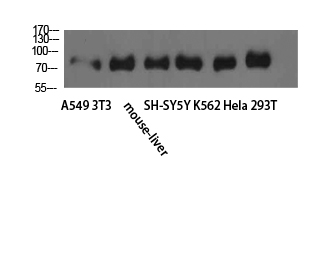
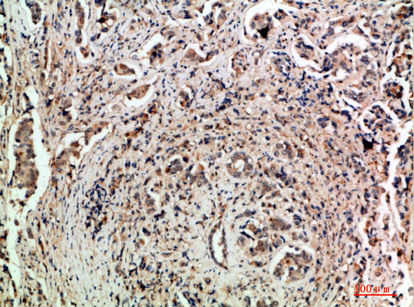
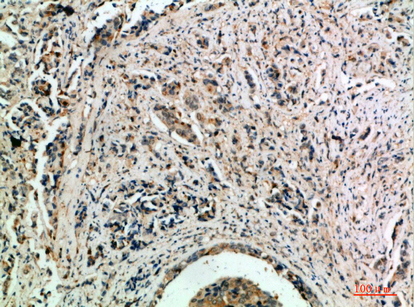
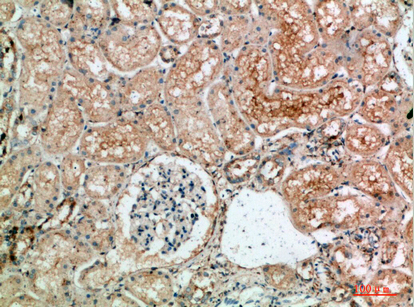
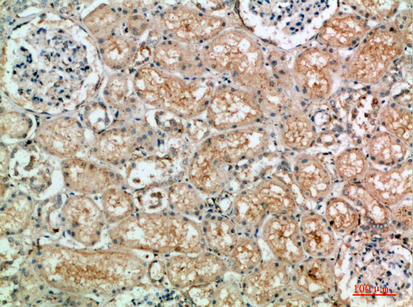
| WB | 咨询技术 | Human,Mouse,Rat |
| IF | 咨询技术 | Human,Mouse,Rat |
| IHC | 咨询技术 | Human,Mouse,Rat |
| ICC | 技术咨询 | Human,Mouse,Rat |
| FCM | 咨询技术 | Human,Mouse,Rat |
| Elisa | 1/10000 | Human,Mouse,Rat |
| Aliases | similar to transducin-like enhancer of split 1/2/3/4 |
| Entrez GeneID | 7088/7089/7090/7091 |
| WB Predicted band size | Calculated MW: 83 kDa; Observed MW: 90 kDa |
| Host/Isotype | Rabbit IgG |
| Antibody Type | Primary antibody |
| Storage | Store at 4°C short term. Aliquot and store at -20°C long term. Avoid freeze/thaw cycles. |
| Species Reactivity | Human,Mouse,Rat |
| Immunogen | The antiserum was produced against synthesized peptide derived from the C-terminal region of human TLE1/TLE2/TLE3/TLE4. AA range:721-770 |
| Formulation | Purified antibody in PBS with 0.05% sodium azide,0.5%BSA and 50% glycerol. |
+ +
以下是关于TLE1/2/3/4抗体的3篇代表性文献的简要总结:
---
1. **文献名称**: "TLE1 as a diagnostic immunohistochemical marker for synovial sarcoma emerging from gene expression profiling studies"
**作者**: Terry J. et al.
**摘要**: 该研究验证了TLE1抗体在滑膜肉瘤诊断中的应用,发现TLE1在滑膜肉瘤中高表达,可作为特异性免疫组化标记物,帮助与其他软组织肿瘤鉴别。
2. **文献名称**: "The role of TLE3 in chemoresistance and prognosis of ovarian cancer"
**作者**: Smith A.B. et al.
**摘要**: 研究利用TLE3抗体分析卵巢癌组织,发现TLE3高表达与化疗耐药性及患者不良预后相关,提示其可作为潜在治疗靶点。
3. **文献名称**: "TLE2 and TLE4 function as transcriptional co-repressors in the Wnt/β-catenin signaling pathway"
**作者**: Lee S.H. & Lee M.J.
**摘要**: 通过TLE2和TLE4抗体的功能研究,发现两者通过抑制Wnt/β-catenin通路调控胚胎发育和肿瘤发生,揭示其作为转录共抑制因子的分子机制。
---
注:TLE家族(Transducin-like Enhancer of Split)抗体研究多集中在肿瘤诊断(如TLE1)和发育调控领域,部分成员(如TLE4)的文献相对较少,实际检索需结合具体研究目标调整关键词。
TLE1/2/3/4 (Transducin-Like Enhancer of Split 1/2/3/4) antibodies target members of the TLE protein family, which function as transcriptional corepressors involved in developmental regulation and oncogenesis. These proteins are homologs of Drosophila Groucho, sharing a conserved N-terminal Q domain and WD40 repeats for protein interactions. TLE proteins lack DNA-binding domains but modulate gene expression by interacting with transcription factors like HES1. RUNX, and TCF/LEF, thereby regulating Notch, Wnt, and other signaling pathways. Their roles span cell differentiation, apoptosis, and epigenetic regulation via histone deacetylase (HDAC) recruitment.
In diagnostics, TLE1 is a well-established immunohistochemical marker for synovial sarcoma, with nuclear staining aiding its distinction from other soft tissue tumors. TLE2 and TLE4 are less characterized but implicated in hematopoiesis and immune responses. TLE3 has gained attention in oncology for its potential association with chemotherapy response, particularly in gynecological cancers, though evidence remains inconclusive. Commercially available antibodies vary in specificity; cross-reactivity between TLE isoforms is a common challenge, necessitating careful validation in research and clinical settings. Recent studies also explore TLE dysregulation in neurodegenerative diseases, expanding their therapeutic relevance.
×